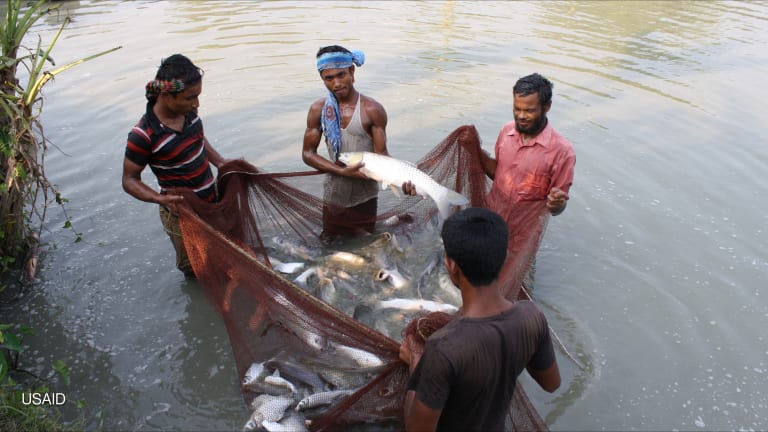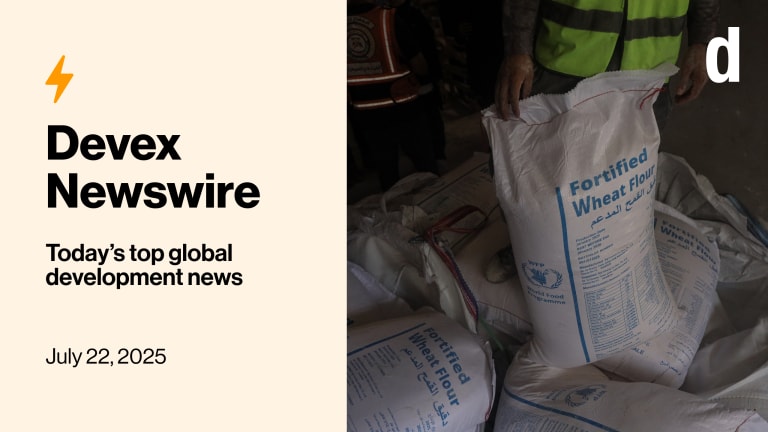
EDITOR’S NOTE: The Aug. 4 decision by Russia to halt grain exports has raised fears of a food crisis similar to what happened in 2008, according to Laurie A. Garrett, senior fellow for global health at the Council on Foreign Relations. Using World Bank data, she cites that food price inflation pushed around 100 million people into subsistence poverty in the first quarter of that year. A few excerpts:
As the Russian landscape burns and Eurasia’s agricultural zone sizzles in a record heat wave, the agricultural commodities markets are threatening to spawn a food crisis akin to the one in 2008. Mixed signals regarding the size of the global wheat supply and the likely impact of Russian Premier Vladimir Putin’s August 4 decision to halt all exports of the grain from Russia for the rest of 2010 are leading to concerns that price inflation in the wheat market could usher another food crisis. The shortage in 2008 left hundreds of millions of people worldwide unable to afford basic foodstuffs, aggravating the overall impact of the later global financial crisis upon poor countries.
A key lesson of 2008 is that volatile global financial markets can result in food commodity price speculation that has dire consequences for the world’s poorest. The inflationary trend that slammed poor countries in early 2008 began with a slow but steady rise in commodity trading prices in early 2007. By the summer of 2007, the overall volume of trading on the U.S. food commodities markets had skyrocketed to record levels, signaling that large investors recognized weaknesses in the stock and real estate markets and were seeking safer havens. The result was a phenomenal escalation, not only in the volume of food commodity investment, but also in trading prices.
By May 2008, the World Bank was estimating that 100 million people had been pushed into subsistence poverty due to food inflation in the first quarter of that year. The bank signaled in the final quarter of 2008 that another two hundred to three hundred million people were pushed backwards into dire poverty by the world financial crisis.
Climate Heats, Russia Burns, Wheat Disappears
There are many wheat-producing nations, including the United States, and no inherent reason why even a 100 percent devastation of Russia’s crop need result in a global grains shortage. But Canada is also experiencing drought-induced shortages this year, and epidemics of wheat rust and the fungal disease dwarf bunt have damaged crops across much of northern Europe.
Though the UN Food and Agriculture Organization (FAO) and U.S. agricultural officials have tried to calm market fears, repeatedly stating that wheat harvests in Latin America and the United States will be strong in 2010, commodity trading in wheat and other grains has, ominously, followed the 2007-2008 trend.
In June, before this latest round of inflation commenced, the FAO and OECD jointly issued a grim forecast of food prices for the coming decade. Thanks to a combination of scarcities, energy costs, and rising middle class demand for diverse diets, the report forecast steady global increases in cereal, grain, oil, and dairy prices for the next decade, with the net impact being an up to 40 percent increase over 2007 levels. Several wealthier, import-dependent countries such as Saudi Arabia and China have been buying up arable land in poorer African and Asian nations, as a hedge against future food shortages.
The prescient FAO/OECD report warned in June that “if history is any guide, further episodes of strong price fluctuations cannot be ruled out, nor can future short-lived crises.”
Bad Time to Be Poor
The overwrought phrase “food security” connotes literally obtaining sufficient calories and nutrients to stay alive. At this moment–before the impact of rising grain prices is felt–millions of people are already experiencing a food security crisis in Chad, Sudan, Niger, and Mauritania, according to NGOs Save the Children and Médecins Sans Frontiers. Some five million people in the region face starvation.
Egyptian authorities said last week that the country has six months of reserve grain supplies: If prices remain high, or rise further, the most populous nation in the Middle East faces dire food shortages.
USAID is trying to move quickly to close food security gaps in Rwanda, Democratic Republic of the Congo, Kenya, Malawi, Sudan, and Uganda, providing support for agricultural production in those countries. But the effort is a race against the food inflation clock, as crops planted today may not reach markets in time to offset the impact of inflated imports.
Can a Crisis Be Averted–This Time?
It is widely expected that Ukraine and Kazakhstan will follow Russia’s lead, banning export of their meager grain harvests. This could spark another round of price speculation. It is widely rumored that India, Switzerland, France, and other European nations have begun hoarding a variety of basic grains, in anticipation of further inflation. If true, that could further drive up market prices. Investment analysts are all over the place in their current forecasts, predicting everything from a 180 degree turnaround in food prices before the end of the year, to absolute doom.
Re-published with permission by the Council on Foreign Relations. Visit the original article.








